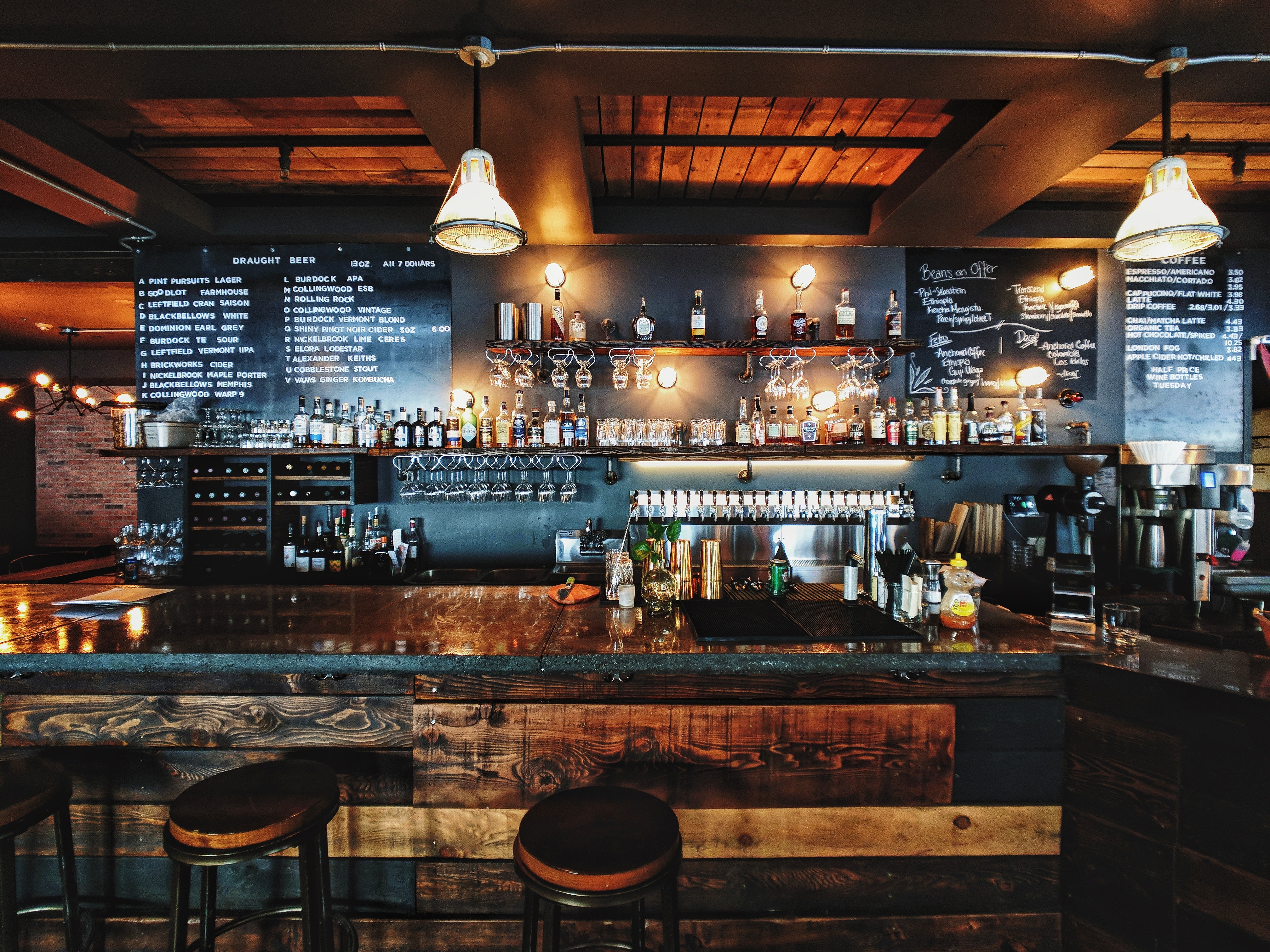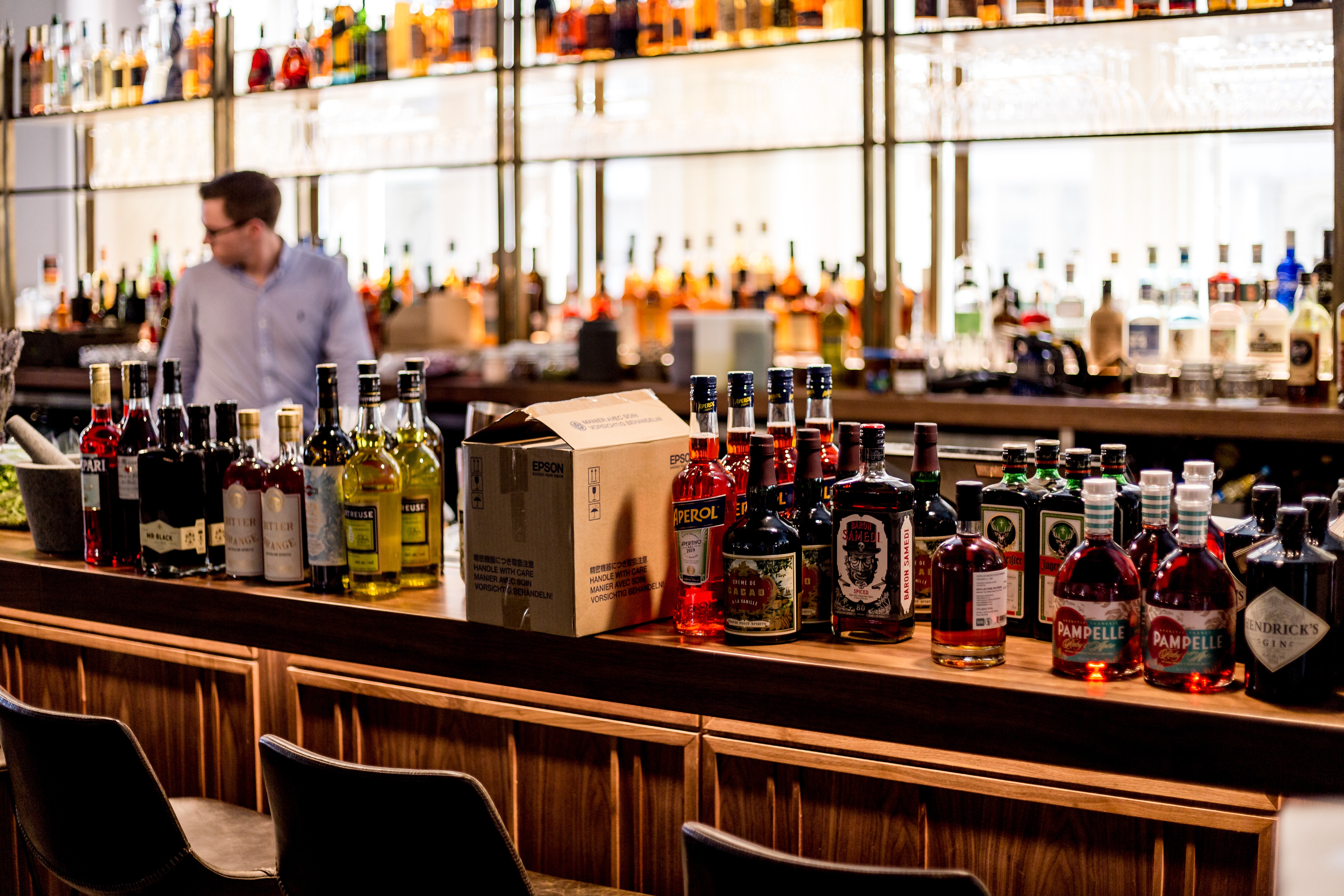Accounting for bars and restaurants can be daunting. They have high inventory turnover rates and may change inventory options seasonally. Managers need a clear picture of inventory needs, as well as how to afford them. Familiarizing yourself with basic accounting and inventory skills can allow you to devote more time to what matters—your customers.
Restaurant and BarAccounting
Knowing which method of accounting to use for food and beverage is vital to operating your business. Many establishments within the hospitality industry benefit from using cash or accrual accounting. With cash accounting, transactions are recorded (and accounted for) when payments are made or received. Accrual accounting records transactions when the service is rendered, regardless of when payment is received. Both methods have their pros and cons, and, as a manager, it is your decision which is best for your business.
Cash Accounting at Bars and Restaurant Bars
Cash accounting is the most common method of accounting within the food and beverage industry. Using the cash method, income is recorded when payments are received. Similarly, expenses are recorded once the payment is made. In most establishments, payment is required at the time the service is rendered. Because service and payment happen almost simultaneously, many managers find cash accounting easy and convenient.
While many managers enjoy the convenience of cash accounting, it is also important to remember the discrepancies. Cash accounting is not always the most accurate in all situations. For example, you may receive weekly deliveries from your vendors, but only pay them quarterly. In this case, using the cash accounting method, you would only record delivery payments four times each year. When reviewing your finances, it may appear that you receive large, quarterly deliveries. In reality, you receive frequent, small, and sometimes varying deliveries.
Accrual Accounting at Bars and Restaurants
Accrual accounting, while not as favored in the industry, can still be useful for some managers. Using the accrual method, managers account for transactions as they occur. In other words, income or expenses are recorded at the time the service is received, regardless of the payment date. Accrual accounting is sometimes favored over cash accounting for its accuracy, as it provides a clearer picture of how often you generate revenue and pay expenses.
When determining your accounting method, remember that the U.S. Internal Revenue Service has strict requirements for certain companies. Smaller restaurants and bars typically have the option of choosing cash or accrual accounting, while larger establishments that generate over $1 million each year must use the accrual method.
 Bar Accounting Software Systems
Bar Accounting Software Systems
Regardless of the accounting or inventory method you choose, you will need a place to store your data. Of course, you can manually write the numbers or enter them into a spreadsheet. This is often the cheapest method but it can also lead to inaccuracies and other issues. If a handwritten number is misinterpreted, values can be over- or understated. Paper files can be lost or damaged. Finally, manually managing accounting and inventory can be time-consuming.
Instead, many restaurant and bar managers have found convenience in online accounting systems. Good accounting software tools will allow you to track inventory, POS sales and expenses. The best tools, however, will also allow you to price menu items, pay employees, and more.
Bar Accounting Tips
The food and beverage industry is unlike any other, and carries its own unique set of challenges. Here are some of our favorite tips for dealing with accounting specifically in the F+B world:
Schedule Bookkeeping for your Bar
No one likes doing accounting. In the food and beverage industry, you’ve also got plenty of other tasks to worry about. So, it’s incredibly easy for your accounting work to slip through the cracks. We suggest setting aside a specific time for bookkeeping, on a daily or weekly basis, depending on your needs. The accounting procedures for restaurants are not easy—but it’s important to regularly familiarize yourself with them.
Keep an Eye on your COGS (Cost of Goods Sold) at Your Bar
Your restaurant or bar will live (or die!) on its COGS ratio. The Cost of Goods Sold is the accumulated total of all costs used to create a product—in this case, a drink or a meal. There are several formulas for determining your COGS. Whatever formula you use, understanding this ratio can help you set prices and maximize profits.
Be Careful with Bar and Restaurant Food Costs
Food costs are constantly changing. So, you need to be vigilant when accounting for food expenses. A case of fresh mint is liable to change with the seasons, or simply at the whims of your purveyor. This makes it incredibly important to always survey your overall food costs. Make sure to keep an eye on the amount of food waste you produce as well—after all, more waste means an increased food cost.

Inventory Management for Bars and Restaurants
Equally as important to accounting is inventory management. When you purchase ingredients or sell meals and drinks, your inventory levels (and ultimately, your accounting) fluctuate. As a restaurant or bar manager, you must know your inventory levels at all times. Running out of a customer favorite can lead to serious losses, but so can overstocked fresh tomatoes.
Periodic Bar Inventory Management
Traditionally, restaurant and bar managers have measured inventory levels periodically. This involves the manager manually counting every single ingredient, bottle and to-go platter. The manager will then write or type these numbers into a tracking system. For the most accurate metrics, this is typically done weekly. However, weekly metrics are usually only taken for the most important inventory items, such as frequently used ingredients. Inventory for other, less used items, can be completed monthly or less frequently.
Perpetual Bar Inventory Management
Another way to manage inventory levels is using a perpetual system. The perpetual inventory method ties directly into your POS system. Inventory is automatically increased or reduced each time you order stock or sell an item. This allows restaurant and bar managers to know how much inventory is on hand at all times. It is important to remember that a perpetual inventory system is theoretical. While it may eliminate the need for weekly, manual inventory counts, inventory managed using a perpetual system cannot be precisely tracked. Perpetual inventory cannot take into account incorrect or returned orders. Perpetual inventory also cannot ensure exactly 1 ounce of liquor is used in each shot. Due to these limitations, it is still vital to manually reconcile the inventory on hand with the values listed in your system.
Bar and Restaurant Inventory Tips
Just like accounting, bar inventory management has its own unique set of challenges and pitfalls. Here are some tips for tackling inventory management in your establishment.
Have the Same Person Track Inventory Every Time
When it comes to inventory, consistency is key. By designating one person for the job, that person will learn the unique nuances and patterns of your inventory. This will also make it easier to identify any mistakes or inaccuracies on your books.
Maintain a Schedule
Just like having the same person track inventory, this tip can help greatly with overall consistency. By taking inventory on the same day each week, you can better understand how much of a given ingredient you are actively using. This will help you see patterns and understand proper inventory management.
Study Past Inventory to Determine Future Orders
Once you’ve completed the week’s inventory, don’t just toss it in the trash. You can use your backlog of ordering/inventory data to inform your future purchases. This can help you keep food costs and overall waste down over long periods of time.
Final Considerations: Bar Accounting
As with most things, what works for one may not work for the other. It is important to determine which accounting and inventory management methods work best for your restaurant or bar. For smaller businesses, traditional methods like cash accounting and periodic inventory management may be best. At smaller levels, these methods are often cheaper and more efficient.
Larger businesses should consider perpetual inventory management. In some cases, larger restaurants and bars must use the accrual accounting method. The most important consideration is whether or not you feel comfortable with these tasks. In the food and beverage industry, accurate, timely metrics can be the difference between profit and loss.



Comments